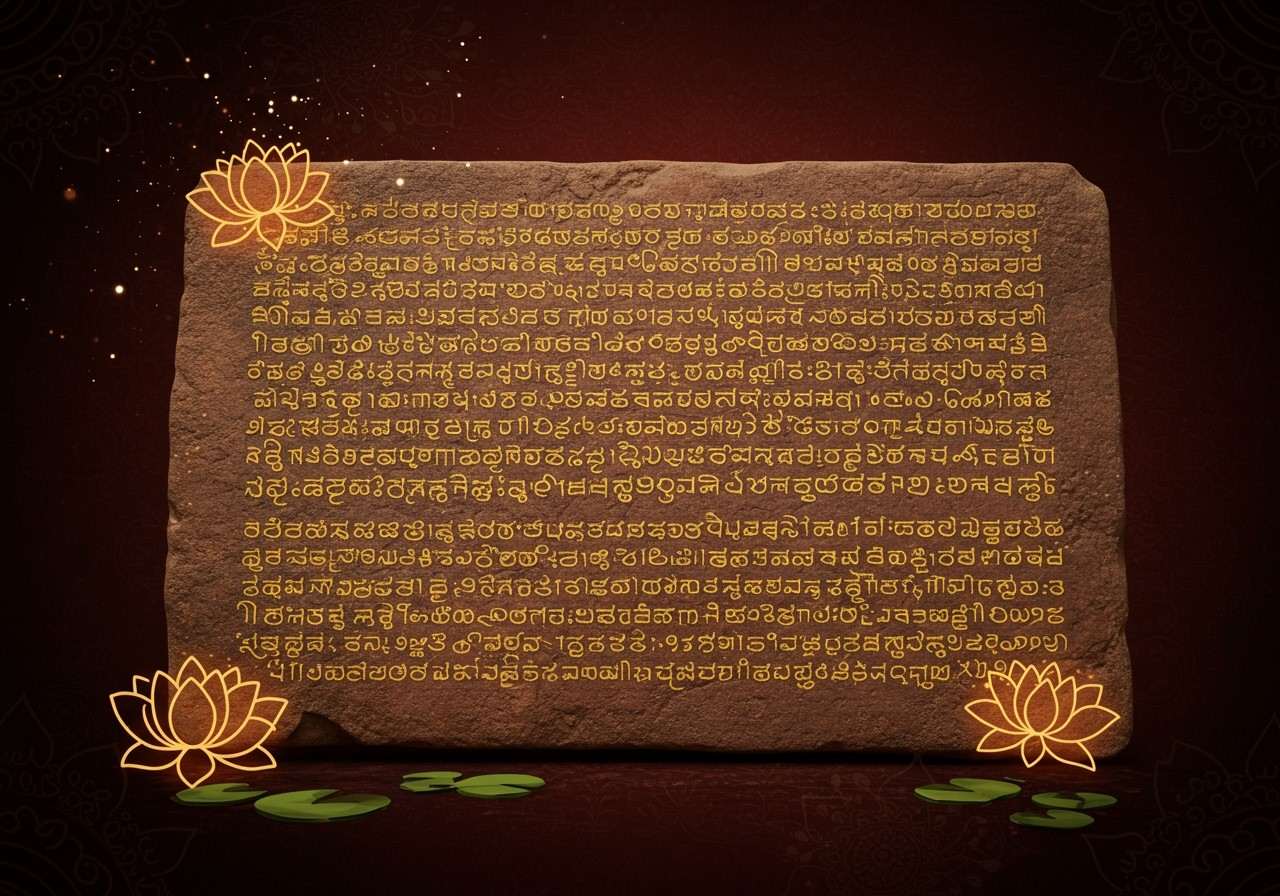
In the heart of Karnataka, in a quiet village, lies a story etched in stone. It’s a story that speaks to every one of us who feels a deep connection to our roots. This isn’t just any old rock; it’s the Halmidi Inscription, a window into our past and the earliest known full-length record of the Kannada language. Imagine a time long before us, a time of kings and kingdoms, where our language was already shaping the world. This inscription is like a time capsule, carrying the voice of our ancestors forward to us.

A Discovery That Rewrote History
The year was 1936. In the small village of Halmidi in Hassan district, a remarkable piece of our heritage was brought to light by the dedicated archaeologist Dr. M. H. Krishna. He found a sixteen-line inscription carved onto a sandstone slab. After careful study, experts dated this incredible find to between 450 and 500 CE. For anyone who loves the history of Karnataka and India, this was a monumental discovery. It was physical proof of the ancient lineage of the Kannada language, a source of immense pride for generations to come.
Whispers from the Past: What the Inscription Says
So, what secrets does this ancient stone hold? The script, written in a form of Kannada that is a precursor to what we use today, details a land grant. It records the donation of two villages to a brave warrior named Vija-Arasa. But it’s more than just a record of a gift. This inscription is solid evidence that Kannada was not just a spoken language but was used for official and administrative purposes even 1500 years ago. It tells us about the sophisticated society and governance of the Kadamba Dynasty, offering a precious glimpse into the social and political life of early Karnataka.
Why the Halmidi Inscription is a National Treasure
The importance of this epigraph goes far beyond its age. It is a cornerstone of our cultural identity and historical understanding. Here’s why it fills our hearts with such pride:
- Our Oldest Kannada Voice: The Halmidi inscription is celebrated as the earliest comprehensive record in our beloved Kannada language. While other fragments might exist, this is the first full-length text, making it a foundational document of our literary and linguistic heritage.
- A Language of Governance: This wasn’t just poetry or a religious verse; it was an official document. This shows that Kannada was the language of the court and administration, reflecting a well-organized society where local language was given immense respect and importance.
- Tracing Our Script’s Roots: The inscription uses a script that is a beautiful bridge between the ancient Brahmi script and the modern Kannada alphabet. For scholars and language lovers, it’s a crucial link that helps trace the beautiful evolution of our writing system over centuries.
- A Window into Ancient Life: Beyond language, the inscription paints a picture of the values of the time. It speaks of heroism, charity, and a structured society under the Kadamba kings, providing invaluable insights that history books alone cannot offer. It is a real, tangible connection to our ancestors.
Are There Even Older Records?
While the Halmidi inscription holds its unique place as the oldest *full-length* record, the quest for our history is always ongoing. Some scholars point to even older fragments that suggest Kannada’s roots run even deeper. Mentions of a 370 AD inscription at the Pranaveshwara temple complex in Talagunda, and potential inscriptions from as early as 350 AD in Shravanabelagola and Tagarthi, fill us with wonder about the true antiquity of our language.
Connecting with Our Heritage Today
Understanding our past enriches our present. Knowing the deep-rooted history of our culture and traditions makes our daily rituals and prayers feel even more profound. These ancient practices connect us to the same spiritual energy that our ancestors felt. At Poojn.in, we are deeply committed to helping you maintain this sacred connection.
To honour these timeless traditions, having the right puja essentials is key. We understand this deep connection and offer authentic pooja samagri to help you perform your rituals with complete devotion. Just as inscriptions preserve our history, sacred texts carry forward timeless wisdom. We invite you to explore our collection of holy books that contain the knowledge of generations, keeping our traditions alive and vibrant in your home.
Preserving This Legacy for Tomorrow
Today, the original Halmidi Inscription is carefully preserved and displayed at the Government Museum in Bengaluru, where everyone can see this piece of our history. Its preservation is a collective responsibility, ensuring that future generations can also look upon it with the same sense of wonder and pride. This inscription, much like the magnificent Ranganathaswamy Temple in Srirangapatna or the ancient Pataleshwar Caves, is not just a relic; it’s a living part of our identity, a story that continues to inspire us all.


